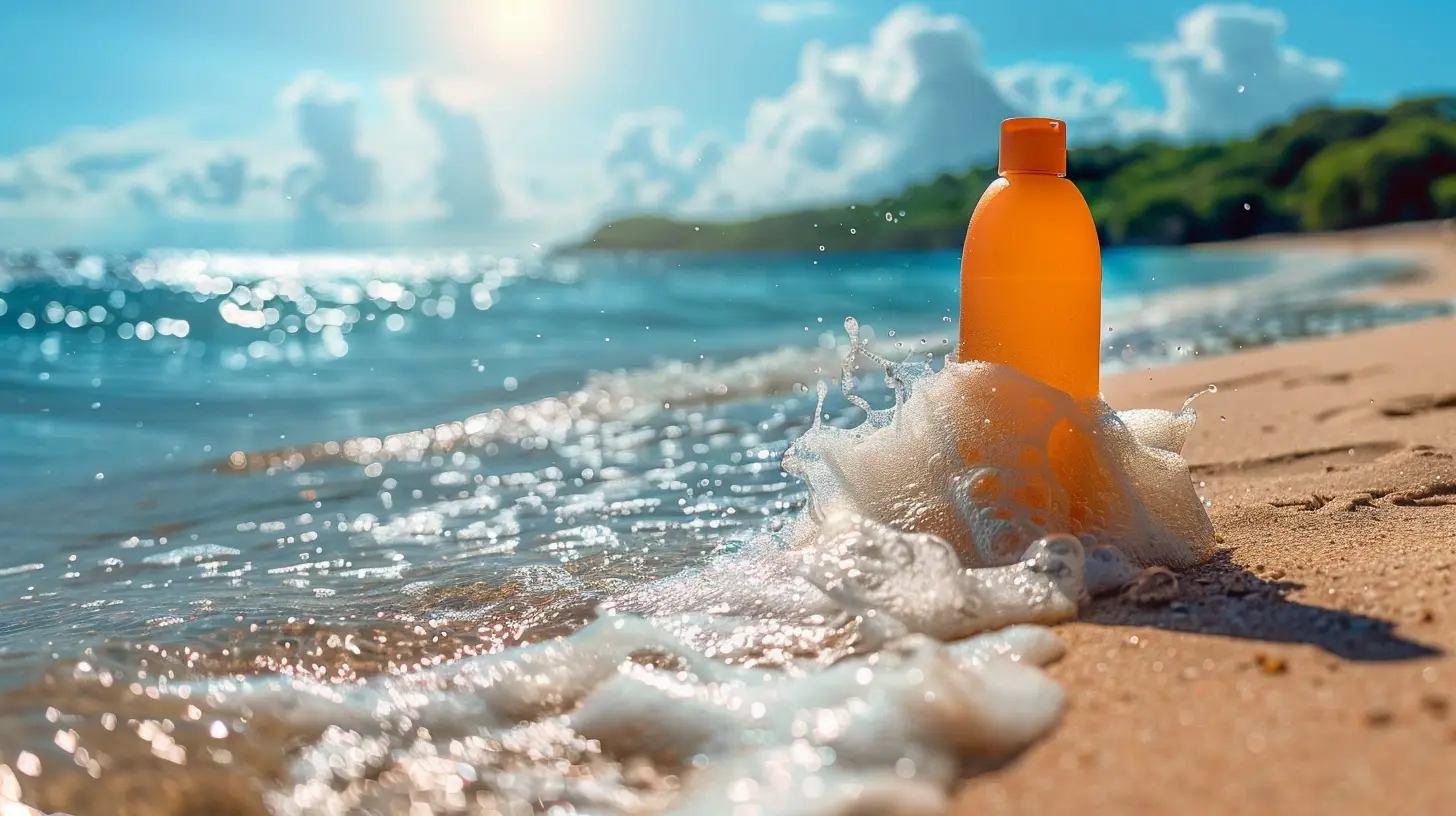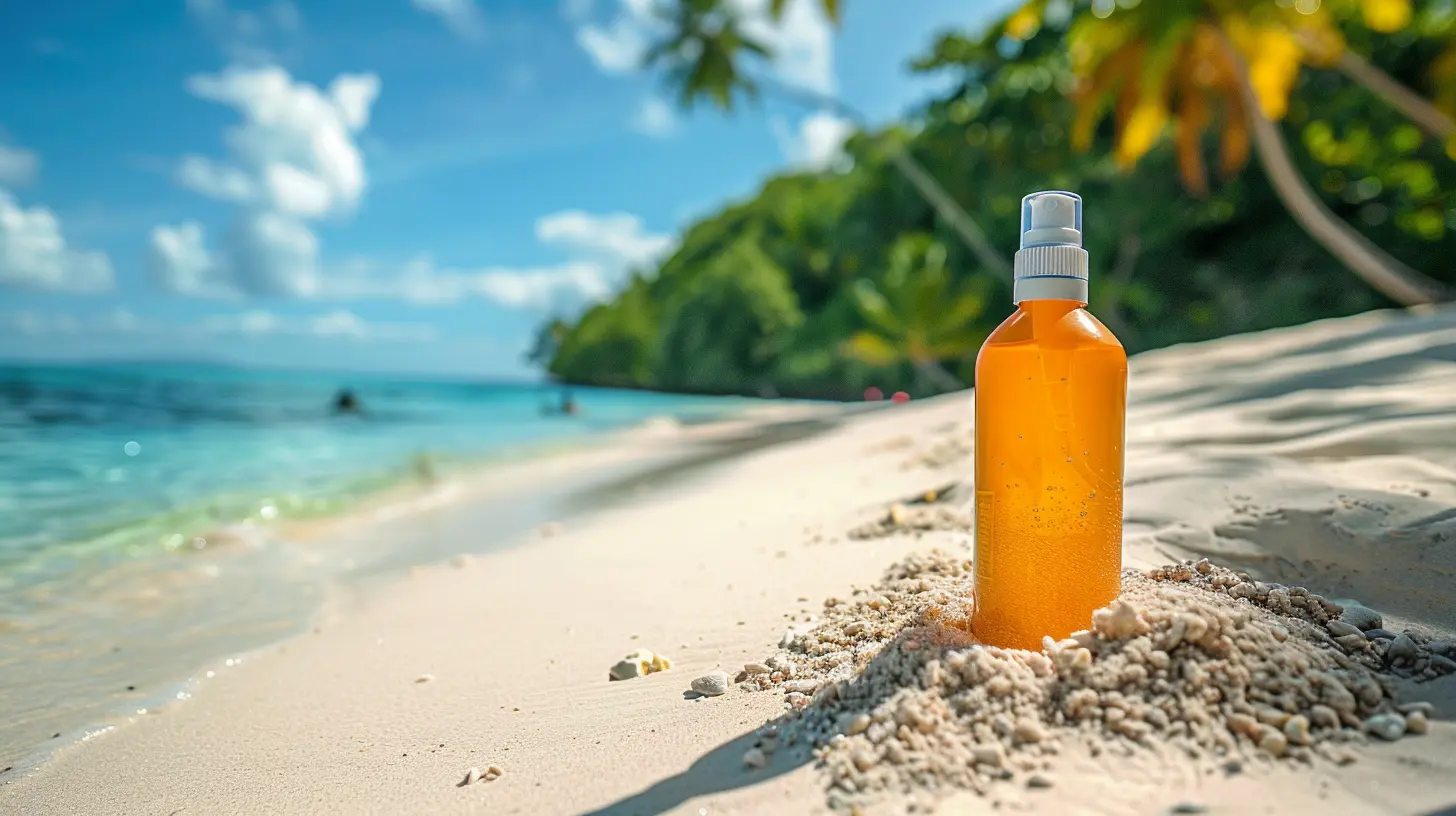How to Choose a Reef-Safe Sunscreen for Your Next Ocean Trip
31 May 2025
Planning a beach getaway or an adventurous snorkeling trip? While you’re packing your swimsuit and sunglasses, don’t forget one of the most crucial items—sunscreen. But not just any sunscreen. You need a reef-safe sunscreen to protect your skin and the delicate marine ecosystems.
Many traditional sunscreens contain harmful chemicals that can bleach and damage coral reefs, contributing to their decline. So, how do you choose a sunscreen that keeps both your skin and marine life safe? Let’s break it down. 
What Makes a Sunscreen "Reef-Safe"?
The term reef-safe or reef-friendly refers to sunscreens that do not contain ingredients known to harm coral reefs and marine life. But here's the catch—not all sunscreens labeled as "reef-safe" actually are. Some brands use this term as a marketing gimmick, so it's essential to check the ingredient list yourself.Ingredients to Avoid
Certain chemicals have been found to cause coral bleaching, deform coral larvae, and even disrupt marine ecosystems. Avoid sunscreens containing:- Oxybenzone (Benzophenone-3) – Absorbed by corals, leading to DNA damage and coral bleaching.
- Octinoxate (Ethylhexyl Methoxycinnamate) – Contributes to deformities in coral larvae and makes them more vulnerable to stress.
- Octocrylene – Breaks down into benzophenone, which is toxic to aquatic life.
- Parabens – Preservatives that can harm marine organisms, including coral reefs.
- Triclosan – Found in some sunscreens, this antibacterial agent accumulates in marine environments and disrupts ecosystems.
Ingredients That Are Safer for Reefs
Look for these reef-friendly ingredients instead:- Non-Nano Zinc Oxide – Provides broad-spectrum protection without harming marine life.
- Non-Nano Titanium Dioxide – Another mineral-based sunscreen ingredient that reflects UV rays without being toxic to coral reefs.
Non-nano simply means the particles are larger than 100 nanometers, preventing them from being ingested by corals and marine organisms. 
Why Choosing Reef-Safe Sunscreen Matters
You might be wondering, "Does my sunscreen really make a difference?" Absolutely.Every year, an estimated 14,000 tons of sunscreen wash off swimmers and into the ocean. Since coral reefs are already under threat from climate change, pollution, and overfishing, reducing chemical contamination is a small but significant step anyone can take to help protect them. 
How to Choose the Best Reef-Safe Sunscreen
When buying sunscreen, don't just trust the front label. Let’s go beyond marketing terms and dig into what truly makes a sunscreen safe for your skin and marine life.1. Check the Ingredients List
Ignore misleading labels and look at the active ingredients yourself. The best reef-safe sunscreens will have non-nano zinc oxide or titanium dioxide as the key ingredients.2. Choose Broad-Spectrum Protection
You still need solid UV protection. Look for broad-spectrum sunscreen, which shields against both UVA (aging rays) and UVB (burning rays).3. Go for SPF 30-50
SPF 30 blocks about 97% of UVB rays, while SPF 50 blocks around 98%. Anything above SPF 50 doesn't provide significantly better protection and may contain more unnecessary chemicals.4. Opt for Water-Resistant Products
Since you’ll be swimming, sweating, or even just lounging near the water, choose a water-resistant sunscreen that lasts at least 40-80 minutes before needing reapplication.5. Consider Lotion Over Spray Sunscreens
Spray sunscreens might seem convenient, but they often contain aerosols and harmful nanoparticles that can be inhaled and damage marine environments. Stick to lotions or sticks for safer application.6. Avoid Sunscreens with Fragrances & Preservatives
Artificial fragrances and certain preservatives can be toxic to marine life. Choose fragrance-free or naturally scented sunscreens made with essential oils.7. Look for Eco-Friendly Packaging
Reef-safe sunscreen should also be earth-friendly. Choose biodegradable, plastic-free, or recyclable packaging to minimize waste.
Other Ways to Protect Your Skin and the Ocean
Reef-safe sunscreen is just one piece of the puzzle. Here are some extra steps to reduce your impact on marine environments while keeping your skin safe:☀ Use UPF Clothing & Rash Guards
Wearing UV-protective clothing, like long-sleeved rash guards and wide-brim hats, reduces the amount of sunscreen you need to apply.☀ Seek Shade During Peak Hours
The sun’s rays are the strongest between 10 AM and 4 PM. If possible, stay under an umbrella or shaded area during these hours.☀ Apply Sunscreen 15-30 Minutes Before Swimming
This allows the sunscreen to fully absorb into your skin, reducing the amount that washes off into the ocean.☀ Reapply Every Two Hours
Even if your sunscreen is water-resistant, it's still crucial to reapply every two hours, especially after swimming or sweating.Recommended Reef-Safe Sunscreen Brands
If you’re looking for trustworthy sunscreen options, here are some brands that meet reef-friendly standards:- Badger – Uses non-nano zinc oxide and organic ingredients.
- ThinkSport – Great for athletes and swimmers, with a non-toxic formula.
- Raw Elements – Biodegradable and water-resistant for up to 80 minutes.
- Stream2Sea – Clinically tested to be safe for reefs and marine life.
- Blue Lizard – Mineral-based, dermatologist-recommended sunscreen.
Final Thoughts
Choosing a reef-safe sunscreen isn’t just about protecting yourself—it’s about protecting marine life, too. With simple ingredient swaps and mindful choices, you can enjoy your ocean adventures guilt-free, knowing you’re helping preserve coral reefs for future generations.So, next time you head to the beach, grab a sunscreen that’s good for both your skin and the sea. Small changes lead to big impacts, and together, we can make a difference in keeping our oceans safe and thriving.
all images in this post were generated using AI tools
Category:
Sun ProtectionAuthor:

Angelo McGillivray
Discussion
rate this article
3 comments
Samuel Holland
Choosing a reef-safe sunscreen is a fantastic step towards protecting our oceans while enjoying the sun! Your mindful choices not only safeguard marine life but also inspire others to follow suit. Let’s cherish our beautiful seas and keep them thriving for generations to come!
June 16, 2025 at 4:30 PM

Angelo McGillivray
Thank you! Every small choice counts in protecting our oceans. Together, we can make a difference!
Renee Bowers
Choosing a reef-safe sunscreen isn’t just a trend; it’s a responsibility. Protecting our oceans starts with informed choices. Ditch the harmful chemicals and embrace eco-friendly options. Your skin and marine life deserve nothing less. Make the switch today!
June 2, 2025 at 2:35 AM

Angelo McGillivray
Thank you for highlighting the importance of reef-safe sunscreens! Making informed choices is crucial for protecting both our skin and marine ecosystems. Let's all commit to eco-friendly options!
Dusk Morris
Protect reefs, embrace sunny seas.
June 1, 2025 at 4:25 PM

Angelo McGillivray
Absolutely! Choosing reef-safe sunscreen is vital for protecting our oceans while enjoying the sun. Thank you for your commitment to preserving these beautiful ecosystems!



